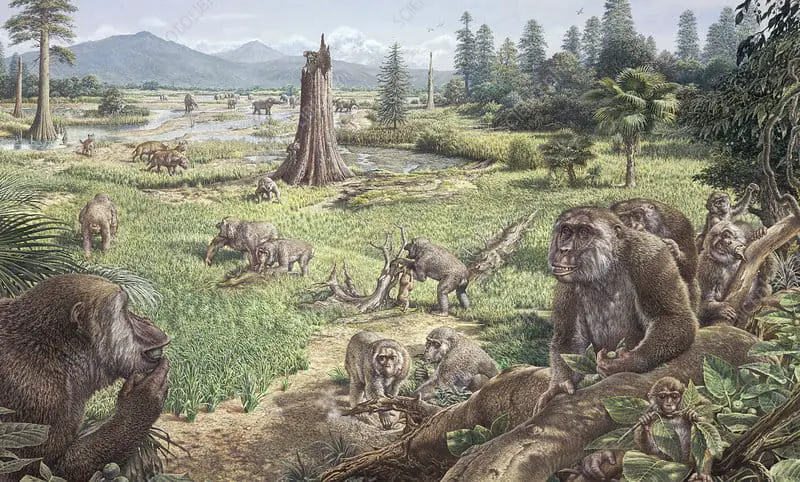Geologists have studied our earth and how it was formed. Ancient time has been divided into ten geological periods. The most recent of these periods is the Cenozoic era. The Cenozoic era is the third of four geological (earth-forming) eras and is believed to have occurred from 23 million years ago to 2.6 million years ago. Within the Cenozoic era, one of the most significant time periods was the Neogene Period.
Neogene means “new born.” ( During the Neogene period, the land masses were dramatically different than today’s. Strong forces under the earth (called “plate tectonics) caused the countries to move and to crash into each other. When two land formations crashed, new land shapes and mountains were formed.

During the Neogene period, India slid into Asia, and the Himalayan mountains were formed. Italy moved northward, and created the Alps. Spain also moved north, toward France – and formed the Pyrenees. The Rocky Mountains and the Andes were formed in North and South America.
During that time, the earth’s sea level was lower than it is now. This lower sea level caused the North and South Poles to grow larger. The ice caps of the poles grew larger. The sea level decreased even further. In some parts of the sea, land bridges formed, and animals could easily move between countries.
South America began to move north. A connection between North and South America formed. During this period of time, Bears,horses, cats and dogs from north america crossed into the south. And porcupines, armadillos, opossum, and ground sloth migrated from the south to north america.
These changes also caused the earth’s temperature to become lower. Forests began to decrease, and grasslands increased (because grasslands thrived in cooler weather.)
Grasslands did not contain the types of nutrients that some animals needed to survive. So, animals who once lived in became extinct, and animals who could survive on grasses increased in numbers. Ruminants (animals with more than one stomach) also became more numerous. These included camels, bison, sheep, and giraffes.
Life forms in the water began to increase. Fossils from the oceans have shown a type of brown kelp that began to grow all over the ocean floor because they thrived in the cooler water. A marine animal called the dugong (they look a bit like a hippopotamus with fins) survived on this kelp. The new plants also allowed the otter to be more plentiful.
Predators who previously survived by eating the now-extinct animals were not fast enough to catch the newer animals, so they also became extinct. New predators ( the ancestors of today’s dogs and cats) began to emerge.
The Neogene period was divided into four different time periods called ages. The last of these was the Pliocene age. During this time period the Australopithecus began to evolve. This creature is believed to have been our first human ancestor, or “the missing link” between apes and humans. (It looked more like an ape than a man.) The Australopithecus could walk on two legs, but their brains were smaller that today’s human brains. During this age, fossils show us that our genus (the “Homo” genus) first emerged. Toward the end of the Neogene period, the first hominids are believed to have been born.
In conclusion, the Neogene Period is a significant time in geological history. Several land masses moved into each other, and mountains were formed. Forests began to decrease, and the number of grasslands increased. This change in plants available caused a shift in the types of animals that lived in that area – and in the kinds of predators which hunted them. The first of our human ancestors – the Australopithecus – evolved, and the first hominids appeared in the final part of the Pliocene age.